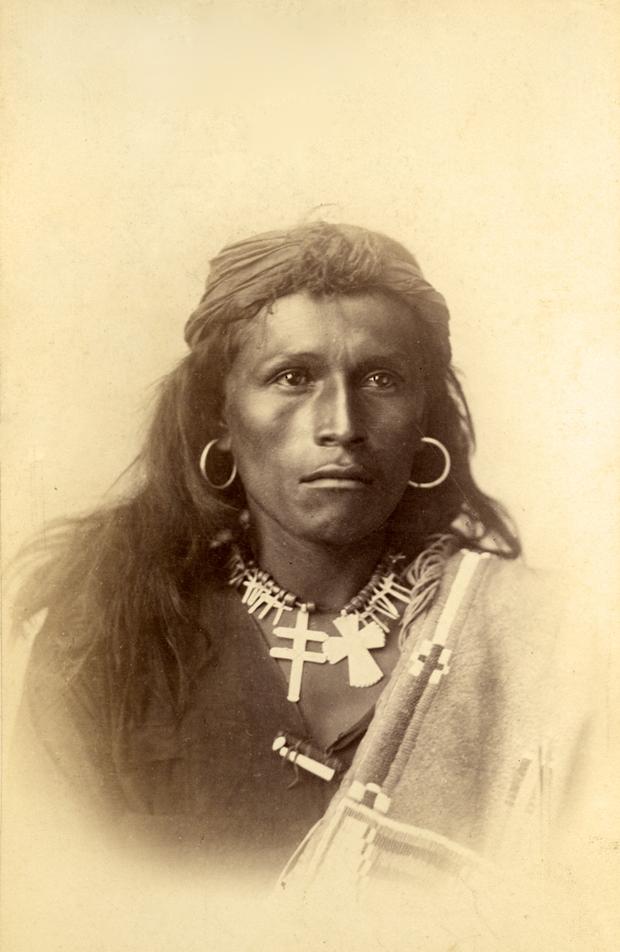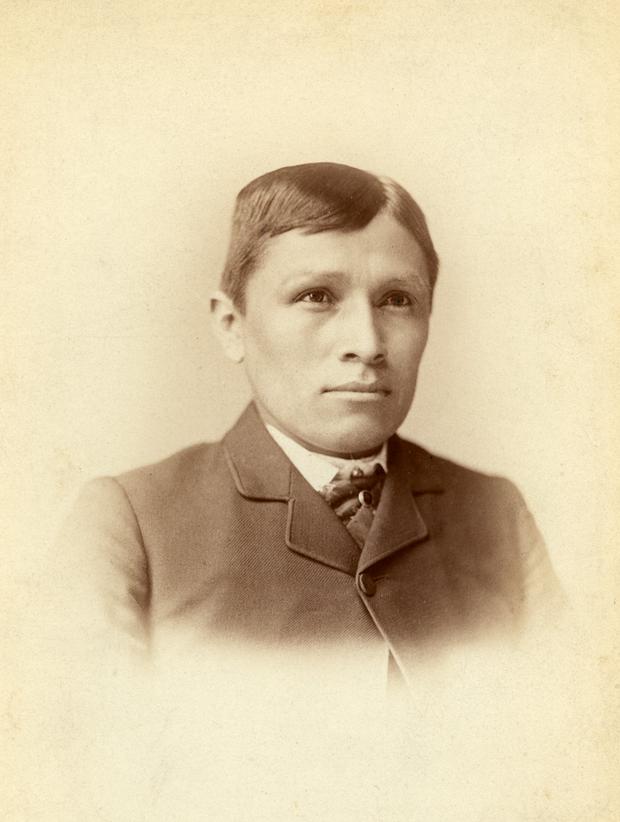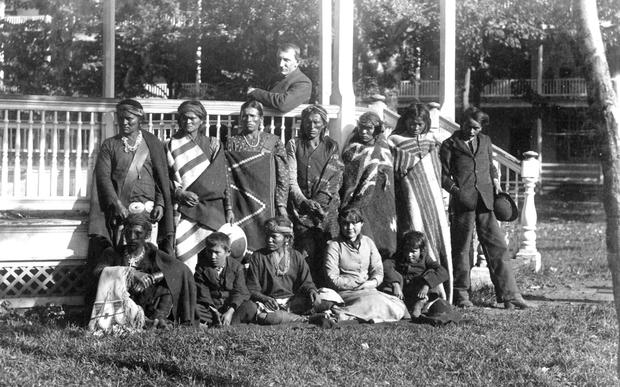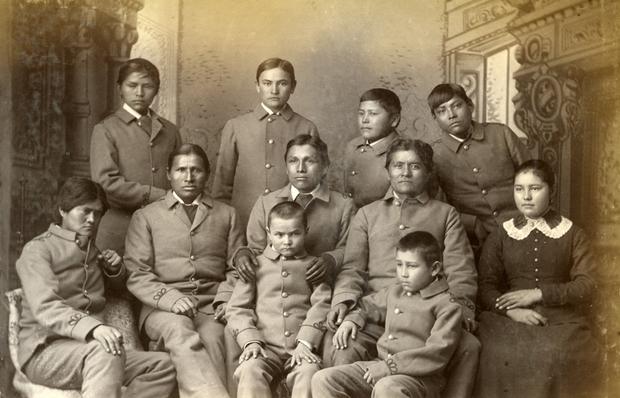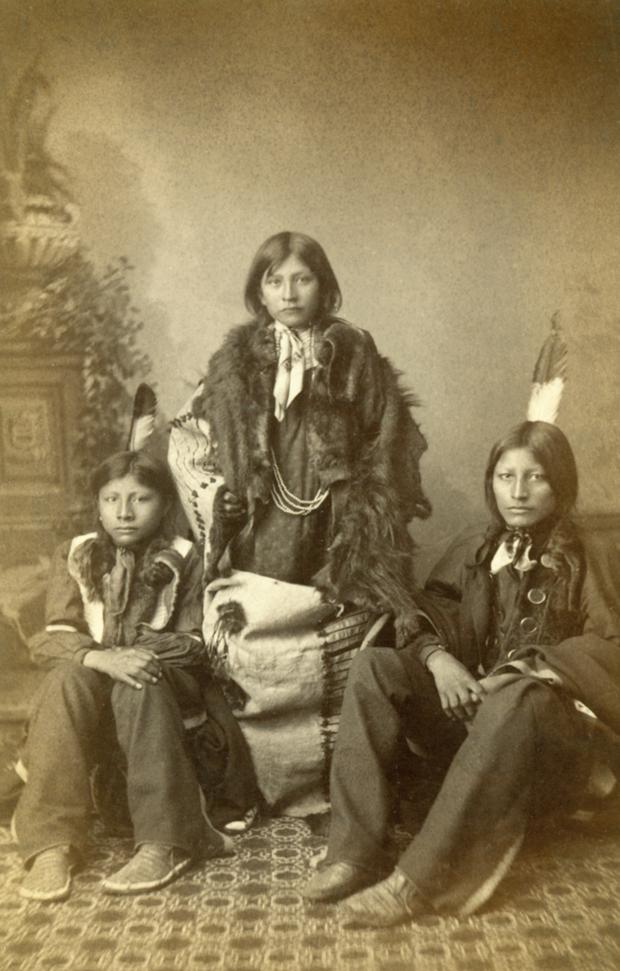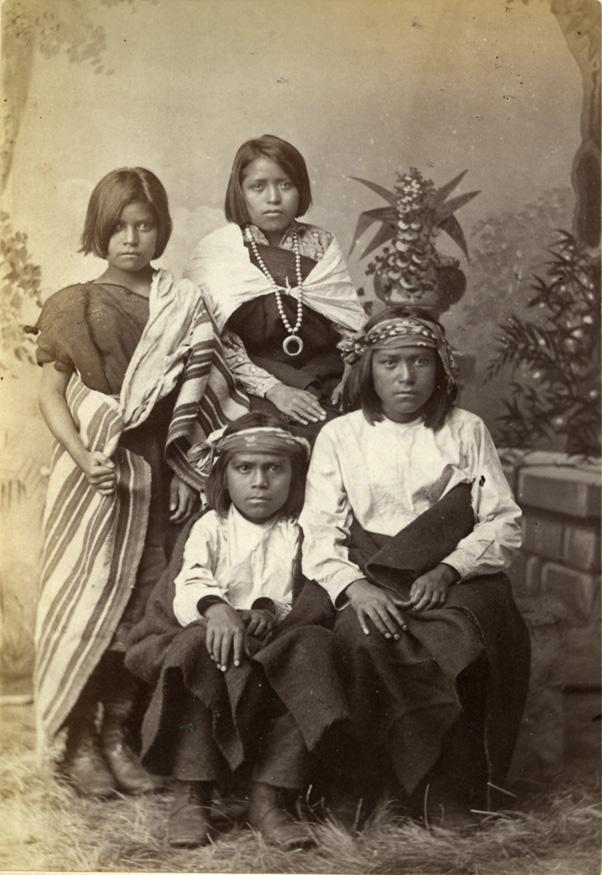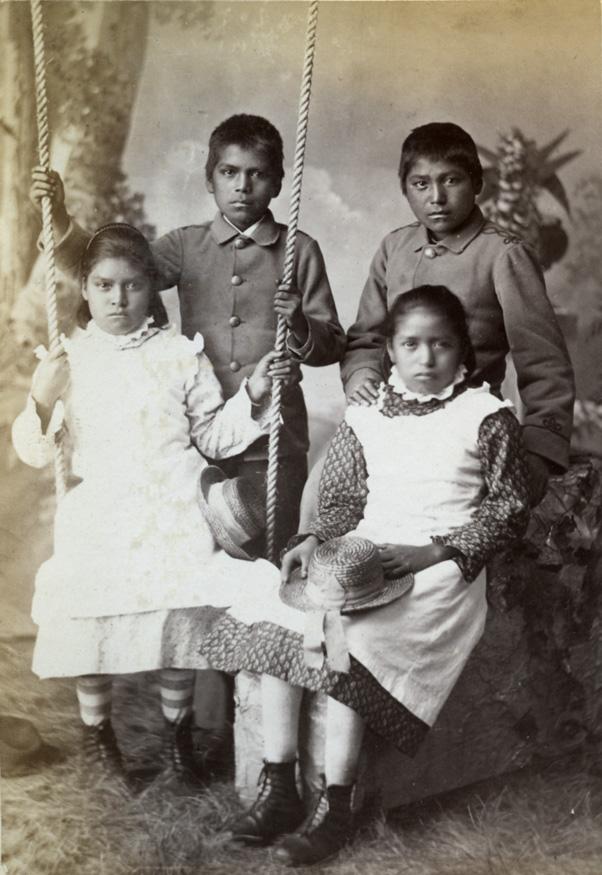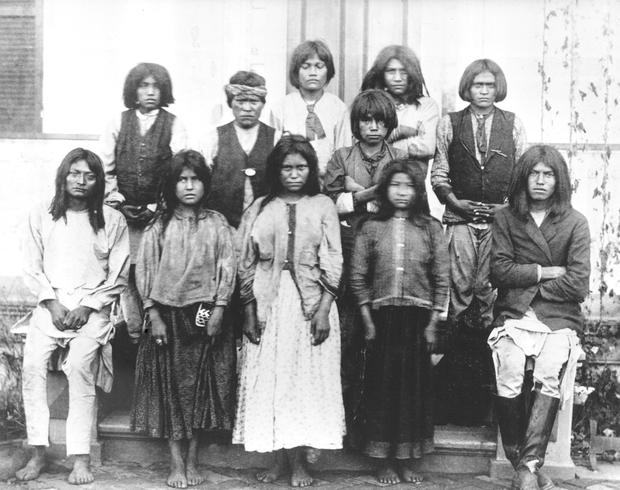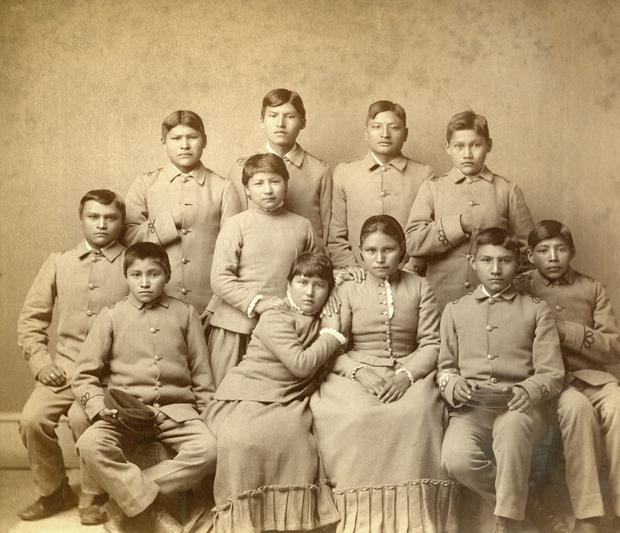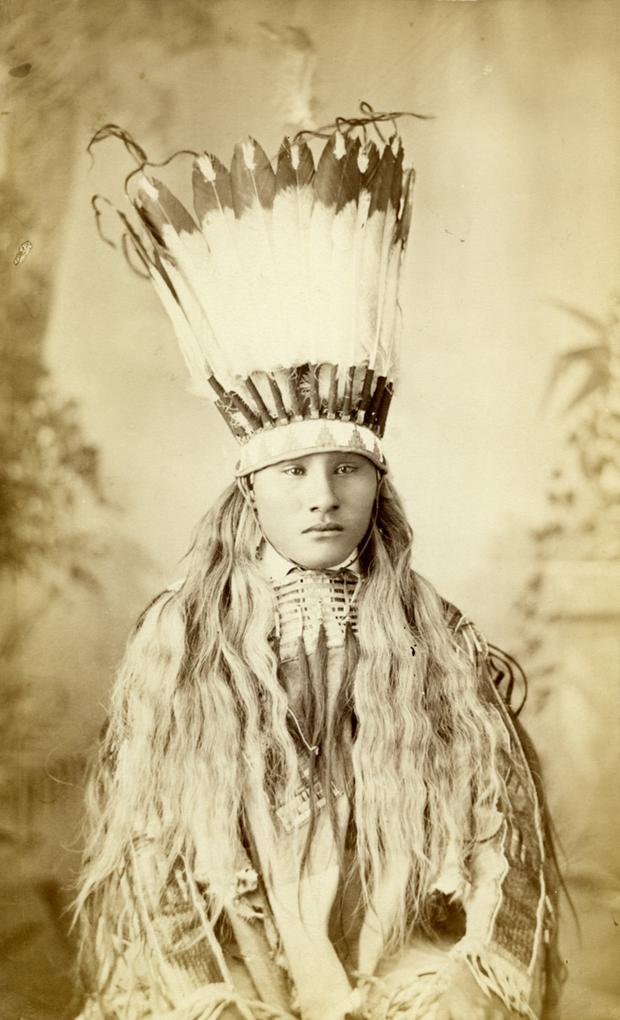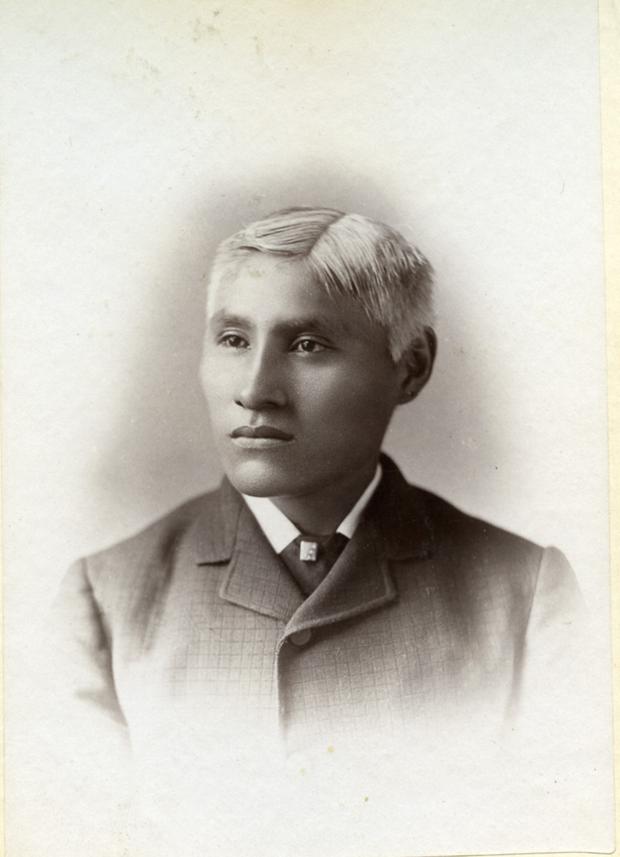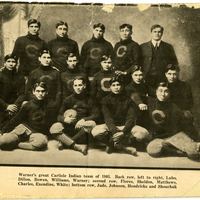
Jan 29, 2015
The Cumberland County Historical Society in Carlisle, PA has boxes upon boxes of jaw-dropping photos and archives from the Carlisle Indian School -- including the "Before and After" student portraits we mention in our Carlisle story (go listen to our American Football episode!).
Just to quickly set these images up... a little bit of backstory. The Carlisle Indian School was founded in 1879 by Colonel RH Pratt, a complicated figure with a troubling legacy. While he championed racial equality (something he set out to showcase at the school), his idea of equality was a peculiarly 19th Century one. He aimed to prove that American Indians were the equals of whites by making them as white as possible. His slogan at Carlisle was "kill the Indian, save the man." Students were forbidden from speaking their own languages. Their hair was cut, they were dressed in suits and ties and corseted dresses. They didn't go home for years at a time. And they were taught trades, like baking and blacksmithing, which were meant to give them a foothold in the white world after graduation. Yet many students had good experiences, and remembered Pratt as a good man... the "father of Indian education," as one student describes him in our story.
Since Pratt's mission was to show that American Indians still had a place in a world that was destroying their homes and cultures, he was eager to hold up examples of students succeeding on his terms. Pratt commissioned these "Before and After" photos to demonstrate the transformations happening at Carlisle.
Let's start with the Tom Torlino -- his portraits are two of the most striking (and best-known) "Before and After" images. Taken by photographer John Choate in his Carlisle studio in 1882, this "before" photo was taken when Tom arrived at school, just a few years after it opened in 1879:
Here he is three years later, in 1885. Notice how much lighter Tom's skin appears in this photo. Barbara Landis and Richard Tritt from the Cumberland County Historical Society believe Choate manipulated the lighting to help make a point: with the proper education, Carlisle students could literally blend in with white society.
Here's another early shot, also from 1882, of twelve Navajo Students -- including Tom Torlino, sitting in the front row, bottom left. And that's RH Pratt looking on from the bandstand:
Then we have "Navajo Group who entered Carlisle October 21, 1882 after some time at the school." Once again, there's Tom Torlino -- sitting in the center row, third from left.
Here's another studio shot, this time of three Sioux boys. Richard Tritt, the CCHS photo archivist, explained that during these studio photo shoots, Choate had props and costumes on hand. It's not clear how much Choate controlled what the students wore, but it's worth bearing in mind... even though the caption on this photo describes "Three Sioux students as they arrived at the Carlisle Indian School in 1883:"
Here are the same three boys after three years at Carlisle, wearing cadet uniforms:
This photo of four Pueblo children is one of the few studio portraits that combines girls and boys. It was taken in 1880, just a year after the school opened:
And now with hair cuts and uniforms:
I find this photo so haunting -- it's a group of Chiricahua Apaches after arriving from a prison camp in Fort Marion, Florida (Pratt ran that prison before starting Carlisle). Barbara Landis explained that these were Geronimo's people, who were not allowed to return home. Conditions were terrible at Fort Marion, and as a result, the Apaches who came to Carlisle from Florida were some of the most unhealthy students at Carlisle, and many didn't survive. The school cemetery has a large number of Apache students buried there.
A few months later, from March, 1887: "Chiracahua Apaches four months after their arrival at Carlisle:"
And finally, White Buffalo. White Buffalo was a student at Carlisle from 1881 to 1884. This photo was taken in 1881, when White Buffalo was 18 -- he had prematurely gray hair:
Here he is some time later, hair cropped and parted, with a jacket and tie:
